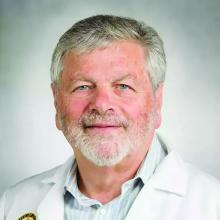In a population study of more than 145,000 patients, participants with TRD used outpatient resources and missed work at twice the rate as patients with treatment-responsive depression. They also had a threefold higher number of days spent in hospital.
Patients with TRD also had a 23% higher risk of dying during the time they were observed, compared with their matched counterparts with non-TRD depression, and their self-harm rates were twice as high.
In addition, it took an average of 1.5 years for patients with TRD to undergo two unsuccessful treatment attempts and reach their third treatment trial, which is several months longer than is recommended for assessing the efficacy of a treatment for depression.
“It seemed like ineffective treatments were allowed to continue for longer than should be needed and what is recommended in current guidelines,” lead investigator Johan Lundberg, MD, PhD, adjunct professor of psychiatry in the department of clinical neuroscience and head of the mood disorder section at the Northern Stockholm Psychiatry Clinic, told this news organization.
“If this is true, patients would most likely benefit from a more frequent evaluation of treatment effect and, when needed, optimization of ineffective treatments,” Dr. Lundberg said.
The findings were published online in JAMA Psychiatry.
More anxiety, sleep disorders, substance use
Using data from the Region Stockholm’s administrative health care database and the Swedish social insurance agency, the investigators identified nearly 160,000 unipolar major depressive disorder (MDD) episodes in 145,577 patients who sought treatment between January 2012 and December 2017.
Of those episodes, 12,800 fulfilled criteria for TRD, which meant there were three or more treatment trials with antidepressants, add-on medication (aripiprazole, lithium, olanzapine, quetiapine, and/or risperidone), electroshock therapy, or repetitive transcranial magnetic stimulation.
Each new treatment had to be initiated within the MDD episode more than 28 days after previous treatment initiation.
Investigators matched each TRD episode with up to five non-TRD episodes and found that patients with TRD were more likely to have comorbid psychiatric conditions than were their non-TRD counterparts.
This included anxiety (60% vs. 44%, respectively), sleep disorders (28% vs. 19%), substance use (15% vs. 11%) or alcohol use (10% vs. 7%) disorders, and personality disorders (6% vs. 3%). Rates of intentional self-harm were also higher in the TRD group (5% vs. 2%).
Perhaps in part because of the comorbid problems, patients with TRD had a more than 50% higher mean number of outpatient physician visits 1 year before and after the index date, defined as the date of the initiation of the third treatment trial.
The most important predictor of TRD depression was the severity of depression at diagnosis on the self-rated Montgomery Åsberg Depression Rating Scale, the researchers report.
Not generalizable?
Patients with TRD also had three times the number of inpatient bed days as did those with depression that responded to treatment (mean, 3.9 days vs. 1.3 days, respectively) and significantly more lost workdays (132.3 days vs. 58.7 days).
Most notably, patients with TRD episodes had a 23% higher risk of dying during the time they were observed than did their non-TRD counterparts.
“This finding in itself could be a reason to focus on how to avoid putting a patient on the TRD path. This could be done through prospective studies comparing different treatment options and their risk of leading to TRD,” Dr. Lundberg said.
Interestingly, he noted that the study results may not be generalizable to other populations, such as the United States.
“The biggest difference between Stockholm and the U.S. may not be the demographics, but the access to health care,” Dr. Lundberg said.
“In Stockholm, there is a universal access health care system, meaning that these results are what you can expect if you are able to get care. In the U.S., this is not the case, meaning that people outside the health care system may fare worse than what our study suggests,” he added.
Quality over quantity
In a comment, Sidney Zisook, MD, distinguished professor of psychiatry at the University of California, San Diego, said that the findings “highlight the need for our field to develop better-tolerated, more effective, and sustainable treatments for major depressive disorder and for better education of clinicians so they can employ up-to-date, evidence-based treatments and integrate sound clinical guidelines into clinical practice.”
Dr. Zisook has independently researched TRD but was not involved with the current study.
He noted that it was “striking how long patients remained on the same antidepressant, apparently despite suboptimal outcomes, without taking next steps.”
However, Dr. Zisook expressed concern that the diagnosis of TRD in the study was solely on the basis of the number of treatment trials for an episode.
“Somebody might have had three different antidepressant trials because they had had three episodes with interepisode periods of recovery followed by recurrent episodes. That would not be considered treatment-resistant depression,” he said.
Dr. Zisook also noted that patients might be given a new antidepressant for reasons other than treatment resistance. “For example, they lost an initial good response – this used to be called Prozac poop out, were nonadherent, or had troublesome side effects,” he said.
“We usually define treatment-resistant depression not only on the basis of number of trials but also the quality of the trial, taking both dose and duration into account,” Dr. Zisook added.
The study was funded by Region Stockholm. Dr. Zisook reports receiving research funding from COMPASS Pathways.
A version of this article first appeared on Medscape.com.



